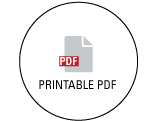M.W. Roomi, N. Roomi, V. Ivanov, T. Kalinovsky, A. Niedzwiecki, M. Rath
Oncology Reports 2005, 14(6): 1399-1404
Introduction:
MMPs have been recognized as the key players in the degradation of the ECM by migration and proliferation of endothelial cells and their subsequent invasion of the underlying stroma. The prevention of ECM degradation through the inhibition of MMP activity has been shown to be a promising therapeutic approach to block the invasion that occurs during angiogenesis. In previous studies we demonstrated the antitumor effect of a nutrient mixture (NM) containing ascorbic acid, lysine, proline, green tea extract, arginine, N-acetyl cysteine, selenium, copper and manganese on various tumor cell lines in vivo and in vitro. The aim of the present study was to determine whether this mixture has antiangiogenic effects on human umbilical vein endothelial cells (HUVECs).
Methods:
At near confluence, the HUVEC cell cultures were tested with NM at 0, 10, 50, 100, 500, and 1000 µg/ml in triplicate at each dose for proliferation, migration, MMP secretion, and invasion. Cell proliferation was evaluated by MTT assay, invasion potential by Matrigel invasion, MMP secretion by gelatinase zymography, and cell migration by a 2mm wide scratch in plates. For tube formation, HUVEC were cultured in previously polymerized Matrigel.
Results:
NM inhibited HUVEC migration, MMP secretion and invasion through Matrigel in a dose-dependent manner. Zymography showed dose-dependent inhibition of MMP-2 expression with virtual total inhibition at 500 µg/ml concentration. Invasion through Matrigel was totally inhibited at 500 µg/ml NM. NM reduced cell migration by scratch test in a dose dependent fashion with total inhibition at 500 µg/ml concentration. NM also inhibited the tube formation of HUVEC. NM did not significantly inhibit cell proliferation.
Conclusion:
These results with our earlier findings suggest that NM is a relatively non-toxic formulation with anti-angiogenic effects, such as inhibiting vascular tube formation and endothelial cell invasion and migration.
Full Study:
